After-school STEM program builds on Indigenous knowledge
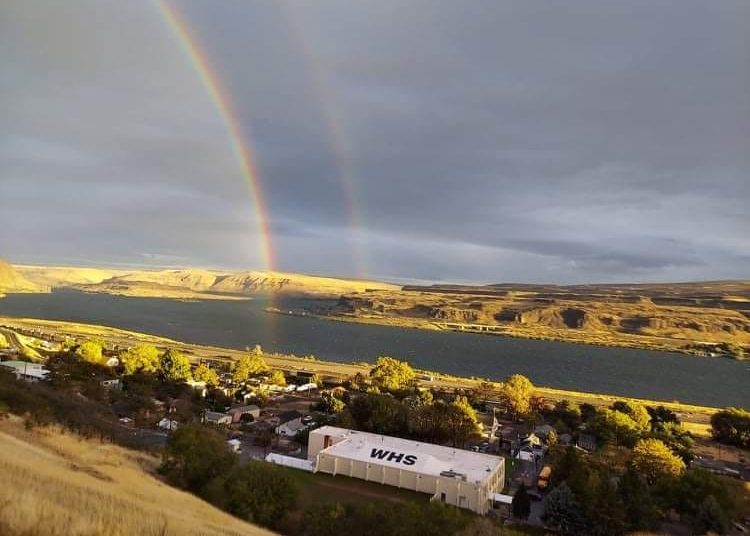
This past fall, enrollment in REACH, an after-school program serving Wishram and Lyle-Dalles schools, located 100 miles east of Vancouver, increased by nearly fifty percent. This influx of some 40 students came from a new housing development for Tribal families, many of whom have lived on “the big river” (Nch’i-Wana in Sahaptin, the Indigenous language spoken along its banks) for a millennium.
“Yes, this was a challenge—but the good kind,” said Heather Lopez, program director of REACH, which stands for Relationships, Enrichment, Academics, Community, and Homework. Funded by 21st Century Community Learning Centers, REACH now serves over 140 K-12 students in schools and focuses on math and English Language Arts, but also integrates STEM (science, technology, engineering and math) and cultural learning.
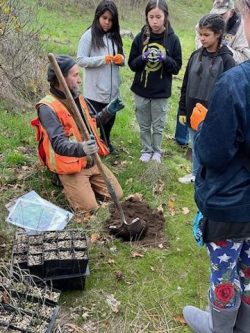
Vickei Hrdina, director of ESD 112’s Career Connect Southwest (CCSW), oversees the REACH program. She said, “I have a checklist for new programs: are they authentic, relevant, engaging? We won’t put anything in front of students that is not. Heather and her REACH team focus on Math and English Language Arts and integrate STEM by partnering with community and families. And she makes it fun!”
After-school programs are often the first to be impacted by funding cuts, so REACH relies on more than 18 partner organizations, many of whom volunteer their time and expertise, and several include a STEM focus: Trout Unlimited takes the students on hikes along the Klickitat River to learn about river’s wildlife habitat; experts from the Columbia River Inter-Tribal Fish Commission teach about the lifecycle of salmon, lamprey eels and other wildlife. Lopez said they also learn about historical sites in the region, including the village at Celilo Falls, the center of trade and salmon-culture in the area for thousands of years.
She said, “They once sent an educator who helped students build an archaeological mock-up dig of Celilo village, using popsicle sticks. Local Indigenous students’ ancestors once lived there, so to see the real impact of the dams was especially meaningful.”
Other activities focus on nutrition and cultural learning. Local partner organization, Skyline Health, sent a nutritionist who taught the students about sugar content in some commercial drinks. “The students were floored by how much sugar is in each drink. We learned how to make healthier options, like smoothies from kale, spinach, and berries.”
REACH also organized a Family STEM Night in partnership with Career Connect Southwest, with several STEM stations for students and their families to experience.
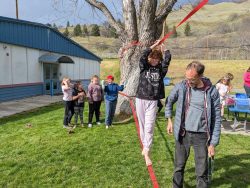
Yes, REACH is a homework help program, but its foundation is to provide cultural enrichment for the students. This means summer is full of field trips to Portland Art Museum, Arts in Education of the Gorge (AIEG) and the Fort Vancouver Regional Library. Students met artists and magicians, explored Hula and Mayan and Aztec dancing, and even got to walk a circus tightrope.
The Columbia River Gorge Discovery Center and Museum’s program, Gorge Ecology Outdoors, organized several outdoor learning experiences such as hiking trails in Lyle, riding bicycles, and exploring the natural and historical significance of Horsethief State Park and the history of the Native American petroglyphs there.
Going beyond one’s comfort zone
Lopez said her indigenous roots help her connect with local tribal students—and they’ve also inspired her. She is both a Shoalwater Bay tribal member and Hawai’ian and was raised in Hawai’i before moving to the Gorge when her dad got a welding job installing fish ladders on the Columbia River. She fell in love with the Gorge and later married her husband, a Yakama Nation tribal member. “We have the best of both worlds: the Gorge, the mouth of the Columbia, and across the Pacific which we consider all of our ancestral homelands.”
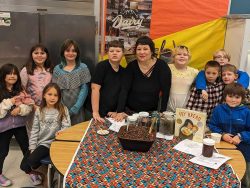
When she and her husband had children, she wanted their Indigenous culture to be part of their education. “Sometimes we ran into roadblocks on our educational journey, but that gave me the ambition and drive to learn more about education pathways from an Indigenous perspective.” Lopez got a job as a tribal youth and families coordinator for Klickitat County 4-H WSU Extension. She attended conferences on Indigenous education and wellness, either taking back what she learned or bringing the youth with her.
Of these learnings she said, “I was driving them outside of their comfort zone. Then one day, some of them said, ‘Well, what about you? You need to walk your own talk and become a teacher.’ ”
Lopez decided to get a bachelor’s degree in Social Work-Psychology in Child and Adolescent Behavior. She said her students inspired her to keep going, so she went on to receive a master’s degree from Arizona State University’s Indigenous Education program. For her final project she advocated for inclusion of an Indigenous perspective in Washington State’s curriculum. Since 2014, Since Time Immemorial: Tribal Sovereignty in Washington state has been taught in all public schools. She now sits on the Board of Directors for the Washington State Indian Education Association (WSIEA) and is on the advisory board for the ESD112’s native advisory committee.
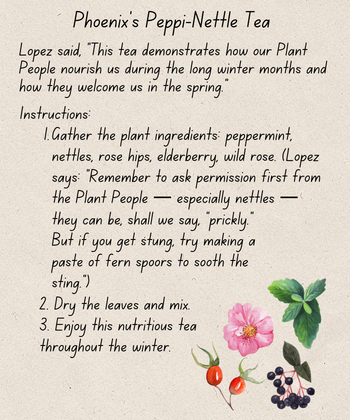
Love of cultural learning:
Lopez integrates Indigenous storytelling into teachings about the natural world—the foundation of science. Over the summer, students learned to identify and gather medicinal plants, like elderberry and rose hip, and prepare them into jam and syrup. Lopez said, “We talk about the medicinal values and what they mean to our people. We talk about the importance of asking permission before picking a plant. We tie the learning into honoring our plant people.”
Lopez said for many young people, these teachings touch them in the heart and stay there. “One child said, ‘Mrs. Lopez, I went to pick a leaf and asked permission to pick it.’ They are so respectful and opening to learning about new teaching and cultures.”
Reaching the whole family
“Tribal students with traditional knowledge are incredibly valuable in [an environmental career path] — because it is often lacking in more typical ‘Western’ ways of career development.”
-Vickei Hrdina, Director, Career Connect Southwest
REACH also relies on strong parental involvement. Lopez said, “We ask parents what they want to see and based on their responses we’ve held sessions on financial literacy, college financial aid, and hosted cultural exchange evenings—like movie nights and carnivals.” She said parents also join field trips like the overnight camping trip to Newport, Oregon.
She added, “Many of the opportunities provided through our REACH Program are new experiences for many of our students such as hiking, traveling to the beach and seeing the ocean for the first time, or visiting the Oregon Museum of Science and Industry, the Oregon Zoo, and so much more.”
The REACH program also includes a career exploration program and internships in partnership with Career Connect Southwest. Vickei Hrdina, CCSW Director said, “REACH offers career exploration that is culturally relevant for tribal students, especially those interested in working for the Department of Fish and Wildlife or the Department of Natural Resources. Tribal students with traditional knowledge are incredibly valuable in that career path—because it is often lacking in more typical ‘Western’ ways of career development.”
“Find strong community partners—they are our foundation. And when they can volunteer their time it helps with sustainability because funding is not always stable.”
-Heather Lopez, Program Director, REACH
As for Lopez’s children, two of her sons have already gone on to college: one is studying to be an environmental engineer in Michigan (and appears in the 2017 video on computer science education below) and the other son earned a BA in social work and native studies from Evergreen State College and now works for the White Salmon Schools District’s 21st Century Community Learning Program (see video below.)
When asked what she’d recommend for other rural schools who want to start an after-school program she said, “Find strong community partners—they are our foundation. And when they can volunteer their time it helps with sustainability because funding is not always stable.”
Even with the influx of new students, Lopez said they were not able to secure additional funding and are currently running the programs with minimal staff. “Despite these challenges we count our wealth in other ways: in our families, in the teachings that honor culture, diversity, and the land and beauty around it—and what it takes to be good stewards of the land.”
Lopez said, “The REACH program is extraordinary and unique. We may be rooted in small rural communities along the Nch’i-Wana, but we have beautiful and powerful stories to share.”
Wishram school was featured in our 2017 video on computer science education and included Heather Lopez’s son who is now getting a degree in environmental engineering in college. She said he credits this early exposure to computer science from Career Connect Southwest for inspiring him get there.